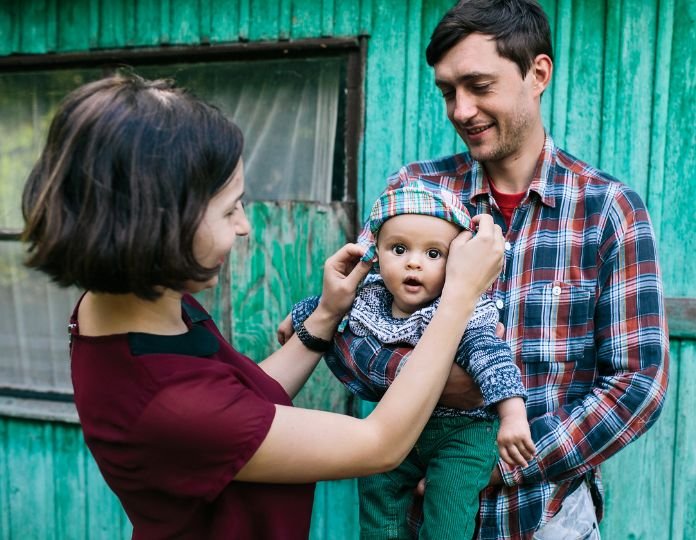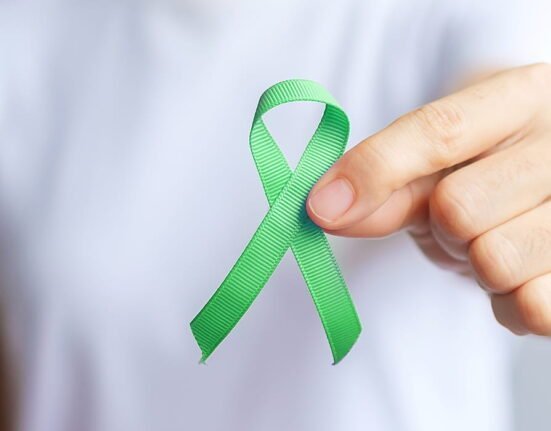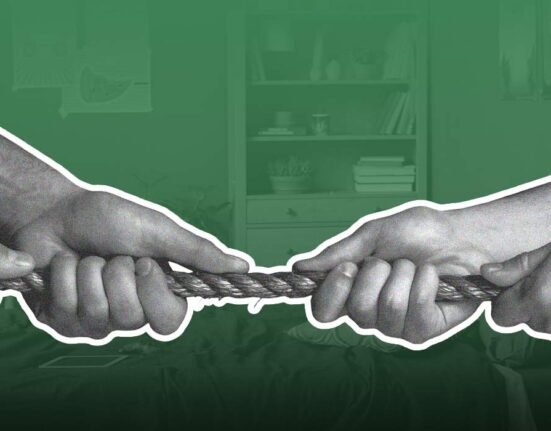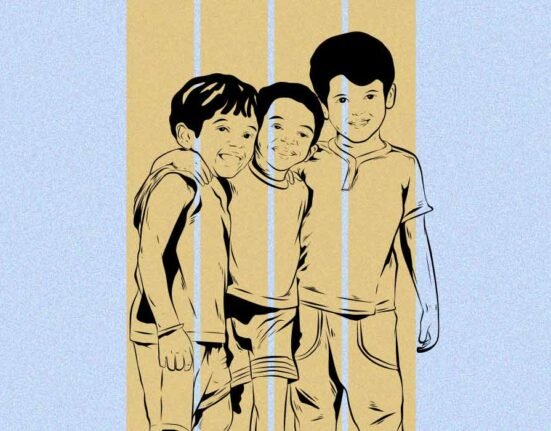We all feel differently, behave differently, and live differently. Yet, there do exist commonalities and similarities in these things. Our behaviour, our roles, and how we deal with emotions are influenced not only by us, but also by our parents, and are influenced largely by the society we live in; our life is influenced by multiple generations, and our values, beliefs, and morals are all formed and passed down from multiple generations. And this tends to differ from one culture to another.
The rules of your family affect how you express your feelings, they place different expectations on you, and they also change how you understand life as a whole. These rules can be as simple as how to behave or how not to, or be as complex as who has the power or how things are passed down. This varies in matrilineal and patrilineal cultures (more about it later).
A majority of gendered roles and expectations that are ingrained in us are defined and influenced by our family, or basically, who is the head of the family, who has to be obeyed, and who has the final say. These systems deeply affect an individual’s emotional life and expectations that may be placed on them.
Read More: Understanding the Mother Wound and Its Impact on Well-Being
Understanding of Lineal Systems
A lineage is a series of families that an individual originates from – it is essentially your family line or ancestry. Your relatives are your lineal systems. They are a group of people who consider themselves to be related because they come from a common ancestor. Different societies or cultures trace their lineage differently. If they trace their family line through the father, it’s called a patrilineage.
Whereas, if they trace their family line through the mother, it’s called a matrilineage. These differences don’t just define the descent and inheritance through either the mother’s or father’s line, but they deeply influence the social fabric, shaping individual identities, family dynamics, emotional responsibilities, and societal norms and expectations. A larger part of the world follows a patrilineal system, where children belong to the father’s family.

Men are in power in these kinds of systems; they are the “heads of the family”, serving as the primary decision makers. In such systems, men are the heirs; i.e., property, titles, and any other valuables are passed on through a male line. However, some societies and cultures follow a different system – a matrilineal system. In this system, the mother’s side of the family determines the ancestry.
Here, the fathers or husbands are not the ones in charge. And the females are freer and play a stronger role in making decisions. But, the majority of the power or wealth is held by the mother’s brother, i.e., maternal uncle or mama. These differences in inheritance are not only limited to wealth or titles, but also highly influence emotional expression and role expectations in families. In patrilineal societies, men influence decisions and make rules, since they are the ones with the power and authority. Whereas, in matrilineal societies, women influence decisions and are the ones with the power and authority.
Read More: Father’s Mental Health Can Impact on Preterm Birth
Emotional Substitution: When Lineage Redirects Affection
Emotional substitution is the unconscious process of fulfilling emotional needs through alternative ways when traditional sources may be inaccessible or constrained. The father’s family plays a more important role in patrilineal societies; inheritance of titles, residences, materials, family name, etc., occurs through the father’s line. Authority typically resides with men, and women often relocate to their husbands’ families upon marriage.
The primary emotional and economic allegiance is to the paternal kin group. A large number of societies are predominantly patrilineal. Thus, in patrilineal societies, families often teach men to suppress their emotions, and they make women bear the emotional labour in a family. Because of this, men don’t form a strong emotional intimacy with their fathers, and instead turn to siblings or male peers for the same.

In these societies, emotional dependence is structured around the husband-wife bond or the parent-child bond. Because society encourages emotional suppression, siblings become crucial sources of emotional support and venting (Wooddell, 2017). On the other hand, in matrilineal societies, the mother’s family has a more important role; inheritance of titles, residences, materials, family name, etc., occurs through the mother’s line.
While men still often hold positions of power within the broader community, women may hold domestic authority and own land. In this society, the mother’s brother plays a crucial role, as the mother often transfers wealth to her daughter’s son through her brother, and then to her granddaughter’s son through her son, and so on. Husbands may move to their wives’ household or maintain strong ties with their maternal families.
Hence, in matrilineal societies, children tend to form stronger emotional bonds with their maternal family than with their fathers, reshaping the nuclear family emotional dynamic. Male children are often closer to their maternal uncles rather than their fathers; they seek that emotional connection in this relationship. Therefore, the mother’s brother, or maternal uncle, has a significant role to play.
Read More: Being A Single Mother Is Tough, But What About Single Fathers?
Cultural Role Expectations Begin
Every society defines a set of traits, attitudes, and behaviours as appropriate for a certain individual in a group or a social setting – this essentially forms role expectations. These role expectations often differ for individuals in terms of their sex. And thus, these role expectations differ in matrilineal and patrilineal societies because people of the other sex have dominant authority and power in either of these societies.
People either display these expectations outwardly through set rules and regulations or convey them indirectly to the individual through others in their role — i.e., the culture of the society they are in may expect people to behave like their mothers, fathers, or other relatives. In patrilineal societies, the family is led by the father. Thus, men are expected to be providers and discipliners.

But the mother often takes on the role of primary caregiver, since society encourages men to suppress their emotions. Fathers are the decision-makers. In such societies, women are expected to move in with their husband’s family after marriage. Her husband’s family expects her to adapt their customs and rituals and behave in ways they deem appropriate. This results in women having little to no autonomy or power.
Families expect sons to take care of their ageing parents and continue the family line. This creates an obligation on them and influences their marital dynamics; this may also lead to a lot of stress. Whereas, in matrilineal societies, women have more authority. They are the decision-makers of the family. Women serve the emotional needs of their families as well. The men are expected to support their sisters and their children rather than their wives or their children. Hence, making the role of a husband more of a supporter and contributor rather than being that of a decision maker. Women tend to have more independence and control over their finances.
Conclusion
Multiple generations influence the complex nature of behaviours, roles, and emotions and also differ across cultures and societies. While the majority of cultures and societies in the world are patrilineal (i.e., the children are a part of the father’s family line), some places do follow a matrilineal society (where children are a part of the mother’s family line).
The influence of the lineal systems is beyond that of ancestry or inheritance; it deeply influences the social dynamics in society. Where patrilineal societies place men as the leaders of the family, matrilineal societies give that authority to women. Patrilineal cultures teach men to suppress emotions and place the responsibility of emotions on women. Whereas, matrilineal cultures empower women with more autonomy and power. These differences show how culture influences and shapes an individual’s emotional expression, interpersonal dynamics, and the expectations society places on them.
FAQs
1. What are linear systems?
A lineage is a series of families that an individual originates from – it is essentially your family line or ancestry. Your relatives are your lineal systems. They are a group of people who consider themselves to be related because they come from a common ancestor.
2. What are the different types of linear systems?
There are two types of lineal systems – patrilineal systems and matrilineal systems. In patrilineal societies, men are the ones in power; they are the “heads of the family”. In these systems, male children are the heirs; i.e., property, titles, and any other valuables are passed on through a male line. Whereas, in matrilineal societies, the mother’s side of the family determines the ancestry. Here, the fathers or husbands are not the ones in charge. And the females are freer and play a stronger role in making decisions.
3. How do the emotional needs and role expectations differ in both the lineal societies?
In patrilineal societies, the family is led by the father. Society expects men to be providers and disciplinarians. Fathers are the decision-makers of the family. The mother often takes on the role of primary caregiver and handles emotional responsibilities, as society expects men to suppress their emotions.
On the other hand, in matrilineal societies, women have more authority. They are the decision-makers of the family. Women serve the emotional needs of their families as well. Men support their sisters and their children rather than their wives or their children.”
References+
APA Dictionary of Psychology. (n.d.). https://dictionary.apa.org/role-expectations
Butler, E. A., Lee, T. L., & Gross, J. J. (2007). Emotion regulation and culture: Are the social Consequences of emotion suppression culture-specific? Emotion, 7(1), 30–48. https://doi.org/10.1037/1528-3542.7.1.30
Hartung, J. (1985a). Matrilineal inheritance: New theory and analysis. Behavioural and Brain Sciences, 8(4), 661-670. https://doi.org/10.1017/s0140525x00045520
Hartung, J. (1985b). Matrilineal inheritance: New theory and analysis. Behavioural and Brain Sciences, 8(4), 661–670. https://doi.org/10.1017/s0140525x00045520
Karthikeyan, S., & Fisher, M. L. (2022). A case study of a historical matrilineal community from an evolutionary perspective. Evolutionary Behavioural Sciences, 17(1), 61–81. https://doi.org/10.1037/ebs0000293
Lewis, J. J. (2021, February 2). Patrilineal vs. Matrilineal Succession. ThoughtCo. https://www.thoughtco.com/patrilineal-vs-matrilineal-succession-3529192
Lowes, S. (2022). Kinship Structure and the Family: Evidence from the Matrilineal Belt. https://doi.org/10.3386/w30509
Macfarlan, S. J., Quinlan, R. J., & Post, E. (2019). Emergent matriliny in a matrifocal, Patrilineal population: a male coalitionary perspective. Philosophical Transactions of the Royal Society B Biological Sciences, 374(1780), 20180073. https://doi.org/10.1098/rstb.2018.0073
Mal, P., & Saikia, N. (2024). Empowering tribal women: a comparative analysis of matrilineal and patrilineal societies in India. Cogent Social Sciences, 10(1). https://doi.org/10.1080/23311886.2024.2360172
Narayan, & Anjana. (2014, May 27). Matrilineal society | Definition, Examples, & Facts. Encyclopedia Britannica. https://www.britannica.com/topic/matrilineal-society
Schneider, D. M. (1974). Matrilineal kinship. Univ of California Press. Song, X., Campbell, C. D., & Lee, J. Z. (2015). Ancestry matters. American Sociological
Review, 80(3), 574-602. https://doi.org/10.1177/0003122415576516
The Editors of Encyclopaedia Britannica. (1998, July 20). Lineage | Family History, Kinship & Descent. Encyclopedia Britannica. https://www.britannica.com/topic/lineage-sociology
Wooddell, L. J. (2017). Matrilines and patrilines. In Springer eBooks (pp. 1–3). https://doi.org/10.1007/978-3-319-47829-6_1996-1













Leave feedback about this